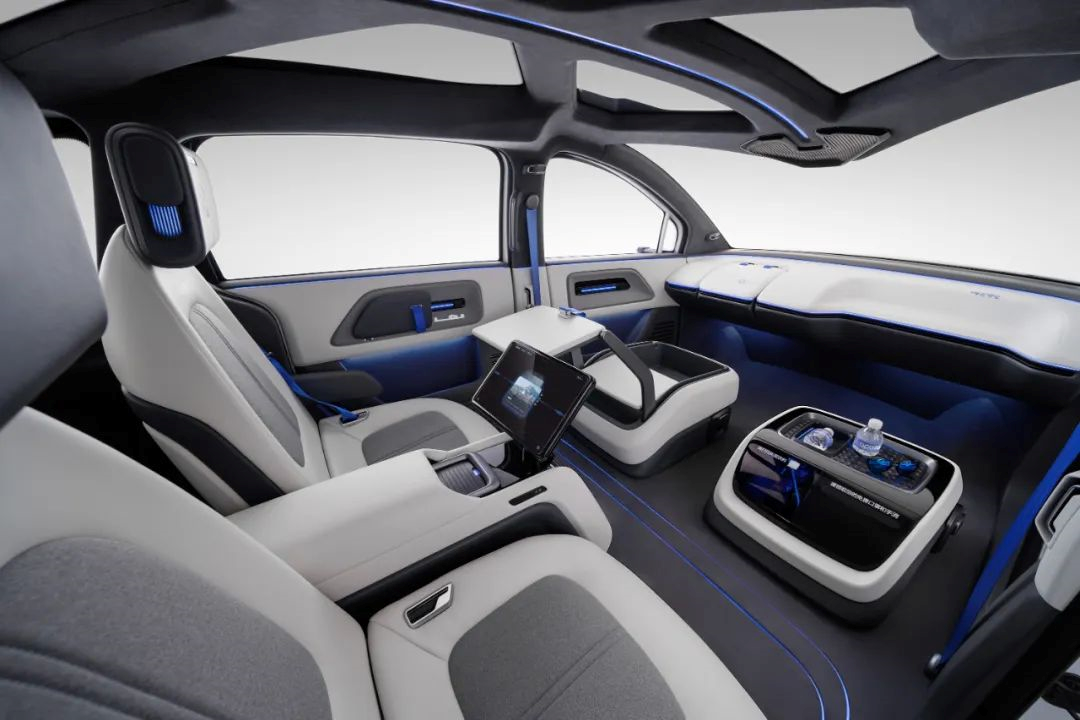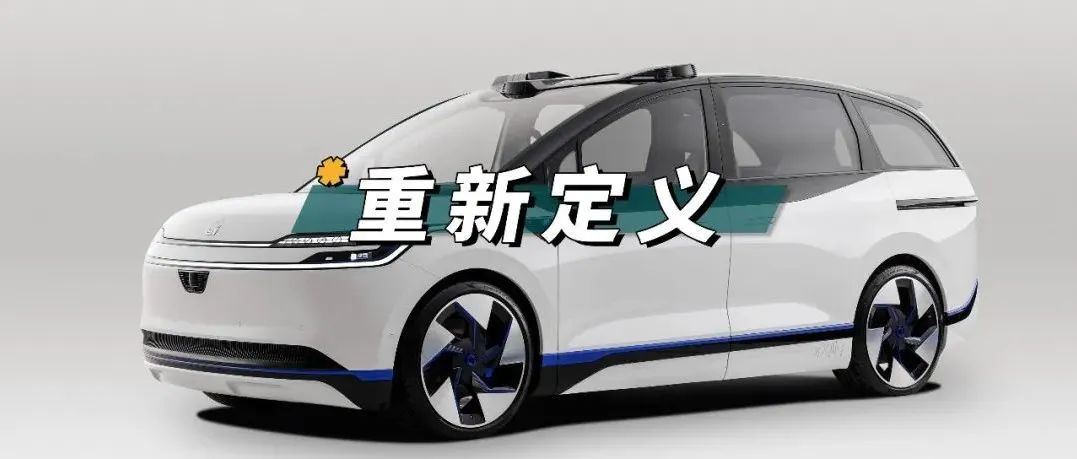Author: I The Office
On July 21st, at the annual Baidu World Conference 2022, Baidu announced new progress in its AI commercial applications, including the release of its sixth-generation mass-produced self-driving car – Apollo RT6.
To put it simply, before this, we had seen a variety of autonomous vehicles designed for the self-driving era like the Cruise Origin or Zoox L5, but they had not yet been put into production. Therefore, in the automotive industry, the progress of Apollo RT6 in the “mass production” dimension, with its accounting cost as low as RMB 250,000, is still unique.
In the automotive industry, “mass production” is a rigorous requirement, meaning that autonomous vehicles must achieve high quality, high safety, and low cost. If RT6 can be produced and deployed according to Baidu’s planned schedule, this may be the most important attack signal that the L4 level self-driving system research and development company has sent to the automotive industry since 2009.
Without further ado, let’s take a look at the true appearance of RT6.
A Robotaxi Designed from a Blank Sheet of Paper
First, let’s take a look at three photos of Apollo RT6’s identification documents.



To be frank, before Baidu officially announced RT6 and related information, I had very reserved views on the significance of mass-produced self-driving cars. The reason is simple: for a long time, the L4 camp had never mass-produced truly self-developed autonomous vehicles.
However, upon seeing the design of RT6, at least half of my doubts were dispelled. It can be seen that the design style of RT6 is not particularly science fiction or cool. If the sensors surrounding the body of the vehicle are removed, the design language of RT6 is more like a new energy vehicle.
But this is the core of why RT6 has a chance. It is a product oriented towards mass production, and while it can have exploratory design for autonomous vehicle scenarios, exploration often means cost. Therefore, RT6 chose to give up some short-term gimmicky designs that are difficult to mass-produce.According to the information released by Baidu, the RT6 is 4760mm long, 1870mm wide, and 1650mm high, but with a wheelbase of 2830mm. From these parameters, we can get two pieces of information. First, the RT6 is clearly a product that Baidu has defined from scratch. Second, looking at the parameters of the RT6, it’s difficult to categorize it as either a traditional sedan or an SUV. It looks more like a cross-border new species defined from the perspective of maximizing interior space in unmanned driving scenarios.
If exterior design alone isn’t enough to explain this, then stepping inside the vehicle provides a clearer view of how Baidu is attempting to redefine what the interior and layout of a car can look like when the driver is no longer essential, and cost constraints dictate the production of a vehicle.

The front seats of the RT6 support modular configuration, which can include adding seats, vending machines, desks, game consoles, or luggage racks. However, perhaps more importantly than these explorations, in addition to unmanned driving mode, the RT6 also supports the installation of a steering wheel which allows for human driving mode.
At present, North America has already announced the time limit on which unmanned vehicles can be driven on the road without a steering wheel, and domestic policies are gradually opening up, such as in Beijing and Chongqing which have issued licenses allowing unmanned vehicles on the road. However, before the policy fully opens up, Baidu must be prepared for both options, whether with or without a steering wheel.

“Removing the steering wheel” means that as the first company in China and the world to enter the L4 level of autonomous driving, Baidu is beginning to fully incorporate designs for large-scale commercial operations.
Considering the complexity of real urban road scenes, this undoubtedly places extremely high demands on the safety system design of the RT6. In fact, the safety system design of the RT6 is comprehensively leading compared to all L4 level autonomous driving vehicles developed that do not consider mass production feasibility.
Safety after “Removing the Steering Wheel”
First, consider a question: why must we “remove the steering wheel”?
The premise of achieving large-scale commercial operation of unmanned vehicles is that unmanned taxis/ride-hailing vehicles must show significant advantages over traditional taxis/ride-hailing vehicles in terms of comprehensive costs. If we break down the cost structure of a taxi, driver costs are one of the three major cost elements on par with vehicle depreciation, and daily operations (energy supplementation, maintenance, etc.). Driver costs are a significant portion of what unmanned vehicles can achieve cost reductions in.
 Translation:
Translation:
Removing the steering wheel is no easy feat. To solve this problem, Baidu has ensured the sustainability of autonomous driving through three dimensions: intelligent bicycles, redundant monitoring, and parallel driving.
Firstly, the intelligent bicycle layer is not limited to Baidu’s development of the country’s strongest L4 level automatic driving full-stack algorithm with a tested mileage training of over 32 million kilometers after 9 years of research and development. In terms of hardware, the RT6 is equipped with 8 lidar, 6 millimeter-wave radar, 12 ultrasonic radar, and 12 cameras, along with a 1200 Tops computing platform.
Looking at the supply chain information, even in 2023 when Baidu announced that the RT6 will start trial operation, this parameter configuration will still be significantly superior, even double the market production vehicle of the same time period.
Moreover, the RT6 will be the biggest challenge in controlling costs at 250,000 RMB. Baidu has not provided specific information on the cost structure and long-term cost trends of the RT6’s hardware system. Considering Baidu’s previous investment in autonomous driving companies in the form of early deployment and the ability to independently develop intelligent driving chips, RT6 mass production may go smoothly.
Secondly, the RT6 has designed a complete redundancy system, which includes seven redundancies, namely sensors, architecture, computing, braking, steering, power, and communication. A complete hardware redundancy can ensure that a single hardware failure has backup hardware that can be timely replaced, which is the most basic functional safety requirement for removing the steering wheel.
At the software level, Baidu has also designed a fault diagnosis and risk degradation system. Based on different risk levels, safe control of the vehicle is ensured through measures such as braking, stopping and roadside parking.
In summary, Baidu has made tremendous effort to establish a safety system design for large-scale commercial operation of autonomous vehicles. From algorithms, systems to products (risk degradation), Baidu has attempted to create a redundancy fault tolerance mechanism that can compare to the steering wheel to ensure the safe control of vehicles in various extreme scenarios.
From a regulatory perspective, on the one hand, we must adhere to “safety first” to ensure the safety and controllable scale of commercial operation of autonomous vehicle fleets; on the other hand, while ensuring safety, we must also create a good innovation environment for top companies, which is an important foundation for promoting China as a global leader in automatic driving.
High Quality and Low Cost, Two Hard Tasks at Once
Safety is the number one priority, there is no question about that. However, to achieve large-scale commercial operation, safety is often the first step, and pursuing low cost and high quality under the premise of guaranteeing safety is the eternal law of commercial competition.Based on the existing mass-produced car models, retrofitting autonomous driving technology is undoubtedly unable to compete with the already highly competitive and durable taxi market in terms of reliability or quality. Therefore, starting from scratch to develop their own technology is the first highlight of the RT6 project.
The RT6 project team belongs to the Automotive Robotics Department established under the Baidu Intelligent Driving Group (IDG) since the beginning of 2021. Baidu Vice President Wang Yunpeng and Baidu Automotive Robotics Department General Manager Xu Baoqiang are the main leaders of the RT6 project team.
In fact, before the RT6, both the 4th and 5th generations of Baidu’s autonomous vehicles were developed jointly with host plants in terms of parts selection, design integration, and manufacturing processes. For example, the Apollo Moon, the 5th generation of Apollo’s autonomous vehicles, has already achieved front-end mass production on the production line of Xpeng, and the pre-assembly process before the production line was completed on the production line of the cooperative automaker.
With the RT6, Baidu stated that their design and manufacturing will fully integrate into the automotive quality management system, with Baidu leading quality control from manufacturing schemes to quality standards, and will be produced by cooperating enterprises. It is reported that relevant OEMs are still in final negotiations.
In terms of costs, in addition to the aforementioned objectives of mass production and down-to-earth thinking, the RT6 completely removes the front smart cabin software and hardware systems, as well as the electronic and electrical architecture behind the controller unit and even seats, to provide some space for cost control.
Of course, the most fundamental cost imagination still comes from managing autonomous driving hardware systems effectively, and the cost reduction driven by the scale deployment plan of 65 cities and tens of thousands of vehicles by 2025.
Finally, in summary, if we occasionally see other companies’ Robotaxi retrofitting fleets on the roads of Beijing, Shanghai, Guangzhou, and Shenzhen, we will find that Apollo RT6 is almost standing in opposition to Robotaxi retrofitting vehicles in every aspect.
As a result, Baidu became the first company in the global L4 technology company camp to directly create a mass-produced Robotaxi model and seek large-scale commercial operation.From the perspective of the automotive industry, multinational giants in the automotive industry were once anxious about L4 technology companies, as evidenced by alliances such as General Motors-Honda-Cruise and Ford-Volkswagen-Argo.ai. However, the continuous delay in the commercial operation of these emerging forces indicates that they are nothing more than paper tigers. At least for now, they have not found the secret to overturning the automotive industry.
However, at least from the information released at the press conference, Apollo RT6 is fundamentally different from the aforementioned companies and even the Apollo previous 5 generations of unmanned vehicles. The goal of RT6 is extremely clear and aims directly at mass production.
For Baidu, a war like RT6 really is desperately needed.
This article is a translation by ChatGPT of a Chinese report from 42HOW. If you have any questions about it, please email bd@42how.com.
